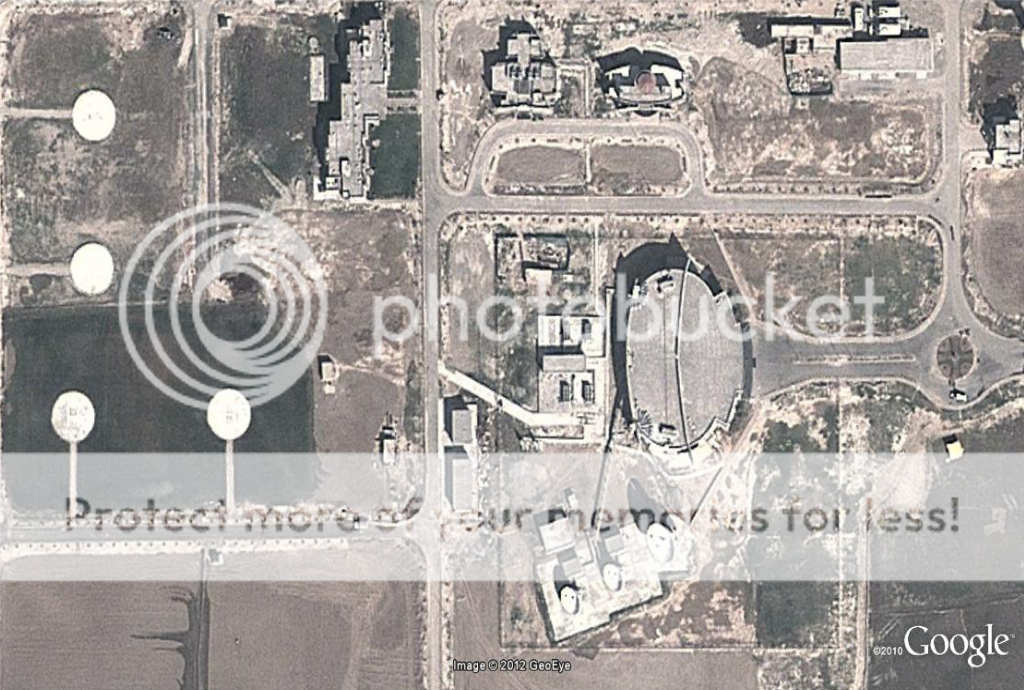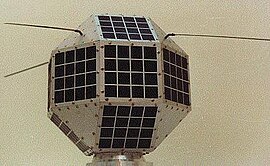Safriz
BANNED

- Joined
- Aug 30, 2010
- Messages
- 20,845
- Reaction score
- -1
- Country
- Location
News Sensing BeiDou and Applying BeiDou BeiDou/GNSS Application
Demonstration & Experience Campaign Held in Karachi, Pakistan (by Sun Baochen, Sep 25, BeiDou) From September 25 to 26, 2012,
BeiDou/GNSS Application Demonstration & Experience Campaign
(BADEC for short) was successfully held in Sheraton Karachi Hotel,
Pakistan. Delegates from Pakistan Space and Upper Atmosphere
Research Commission (SUPARCO), ministries of agriculture, aeronautics,
urban and rural construction, transportation, mapping, disaster prevention and reduction, and related enterprises, technical research
institutions and universities participated in this event. Through various
activities including reports, technical speeches, discussion,
communication, exhibition and demonstration, they witnessed and
understood the establishment and application achievements of the The
BeiDou System, and carried out broad exchange and communication with Chinese leading enterprises in satellite navigation field. The opening ceremony of BADEC was held on the morning of
September 25. Chairman of SUPARCO Ahmed Bilal praised the
establishment and application achievement of The BeiDou System. He
said that developing high and new technologies like satellite
navigation would play an important role in promoting social economic
development of Pakistan. He hoped to popularize satellite navigation technology and promote the application of BeiDou navigation system
in Parkistan through the BADEC event. Ran Chengqi, Director of China
Satellite Navigation Office (CSNO), pointed out in his remarks that
Navigation satellite system is an important space infrastructure of a
country. As an influential power worldwide, China attaches much
importance to the establishment, development and application of BeiDou Navigation Satellite System. At present, the cooperation
between China and Pakistan in the field of satellite navigation has
been pushed forward steadily, and the implementation of BADEC event
marks the significant and practical achievement during bilateral
cooperation procedure. The Consul General of China in Karachi, Mr.
ZHANG Jianxin said The friendship between Pakistan and China is of long lasting, and people from both countries are as intimate as
brotherhood. The domain of satellite navigation has explored further
space for bilateral technical cooperation. As the first large-scale event
jointly organized since two countries started cooperation in the field of
satellite navigation, BADEC event had opened up a new prospect for
the internationalization of The BeiDou System, and created advantageous environment for Chinese enterprises to expand market
abroad. During the symposium in BADEC event, the delegates from China and
Pakistan made presentations regarding the development and
applications of the BeiDou System, and the application of GNSS
applications in Pakistan; In technical report session, Chinese and
Pakistani experts carried out deep exchange and discussion on the
application of GNSS in vehicle information management, ship monitoring and management, high precision measurement, position
service and geographic information system. In the seminar session,
Chinese enterprises leading in satellite navigation, including China
Aerospace Science and Technology Corporation (CASTC), China
Electronics Technology Group Corporation ( CETC ), carried out
cooperation communication with Pakistani customers and related enterprises with regard to mapping and surveying, ground
transportation, aviation, ground-based augmentation, disaster
prevention and reduction. The exhibition demonstration session, which
was divided into three partssystem, application and enterprise,
demonstrated to the Pakistani delegates and the public the
establishment of the BeiDou navigation system, the latest achievements and creative concepts in civil application areas in the
way of display boards, physical exhibits and field show The event hosted by CSNO and SUPARCO with the theme of Sensing
BeiDou and Applying BeiDou, aimed at promotion of technical
exchange and cooperation. Through various activities including
reports, lectures, symposiums and exhibitions, it showed the
construction and application achievements of the BeiDou navigation
system to establish BeiDou brand, promote enterprise cooperation, push forward the steady development of China-Pakistan cooperation,
and explore the ways and methods for expanding the market of the
BeiDou navigation system to the Asia-Pacific region and the whole
world. Chinese government attached great importance to the event. The
delegates from the Ministry of Foreign Affairs, the Ministry of Industry
and Information Technology, as well as theleading enterprises in
satellite navigation including CASTC and CETC participated in this event.
Demonstration & Experience Campaign Held in Karachi, Pakistan (by Sun Baochen, Sep 25, BeiDou) From September 25 to 26, 2012,
BeiDou/GNSS Application Demonstration & Experience Campaign
(BADEC for short) was successfully held in Sheraton Karachi Hotel,
Pakistan. Delegates from Pakistan Space and Upper Atmosphere
Research Commission (SUPARCO), ministries of agriculture, aeronautics,
urban and rural construction, transportation, mapping, disaster prevention and reduction, and related enterprises, technical research
institutions and universities participated in this event. Through various
activities including reports, technical speeches, discussion,
communication, exhibition and demonstration, they witnessed and
understood the establishment and application achievements of the The
BeiDou System, and carried out broad exchange and communication with Chinese leading enterprises in satellite navigation field. The opening ceremony of BADEC was held on the morning of
September 25. Chairman of SUPARCO Ahmed Bilal praised the
establishment and application achievement of The BeiDou System. He
said that developing high and new technologies like satellite
navigation would play an important role in promoting social economic
development of Pakistan. He hoped to popularize satellite navigation technology and promote the application of BeiDou navigation system
in Parkistan through the BADEC event. Ran Chengqi, Director of China
Satellite Navigation Office (CSNO), pointed out in his remarks that
Navigation satellite system is an important space infrastructure of a
country. As an influential power worldwide, China attaches much
importance to the establishment, development and application of BeiDou Navigation Satellite System. At present, the cooperation
between China and Pakistan in the field of satellite navigation has
been pushed forward steadily, and the implementation of BADEC event
marks the significant and practical achievement during bilateral
cooperation procedure. The Consul General of China in Karachi, Mr.
ZHANG Jianxin said The friendship between Pakistan and China is of long lasting, and people from both countries are as intimate as
brotherhood. The domain of satellite navigation has explored further
space for bilateral technical cooperation. As the first large-scale event
jointly organized since two countries started cooperation in the field of
satellite navigation, BADEC event had opened up a new prospect for
the internationalization of The BeiDou System, and created advantageous environment for Chinese enterprises to expand market
abroad. During the symposium in BADEC event, the delegates from China and
Pakistan made presentations regarding the development and
applications of the BeiDou System, and the application of GNSS
applications in Pakistan; In technical report session, Chinese and
Pakistani experts carried out deep exchange and discussion on the
application of GNSS in vehicle information management, ship monitoring and management, high precision measurement, position
service and geographic information system. In the seminar session,
Chinese enterprises leading in satellite navigation, including China
Aerospace Science and Technology Corporation (CASTC), China
Electronics Technology Group Corporation ( CETC ), carried out
cooperation communication with Pakistani customers and related enterprises with regard to mapping and surveying, ground
transportation, aviation, ground-based augmentation, disaster
prevention and reduction. The exhibition demonstration session, which
was divided into three partssystem, application and enterprise,
demonstrated to the Pakistani delegates and the public the
establishment of the BeiDou navigation system, the latest achievements and creative concepts in civil application areas in the
way of display boards, physical exhibits and field show The event hosted by CSNO and SUPARCO with the theme of Sensing
BeiDou and Applying BeiDou, aimed at promotion of technical
exchange and cooperation. Through various activities including
reports, lectures, symposiums and exhibitions, it showed the
construction and application achievements of the BeiDou navigation
system to establish BeiDou brand, promote enterprise cooperation, push forward the steady development of China-Pakistan cooperation,
and explore the ways and methods for expanding the market of the
BeiDou navigation system to the Asia-Pacific region and the whole
world. Chinese government attached great importance to the event. The
delegates from the Ministry of Foreign Affairs, the Ministry of Industry
and Information Technology, as well as theleading enterprises in
satellite navigation including CASTC and CETC participated in this event.











